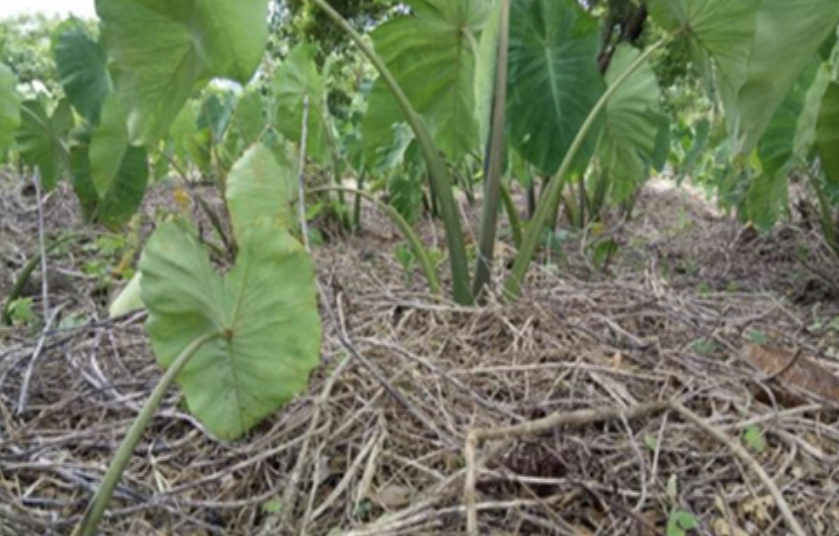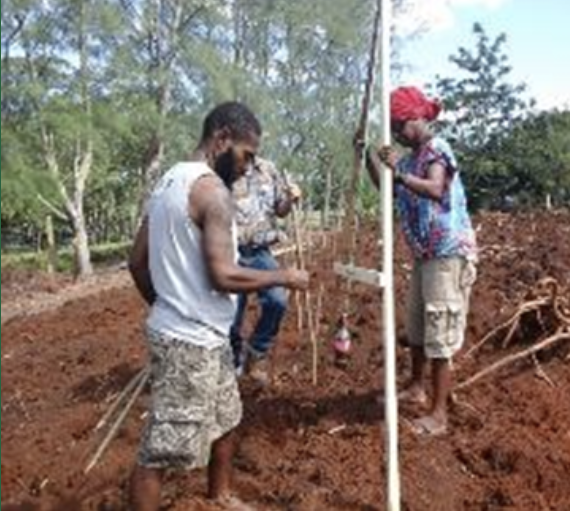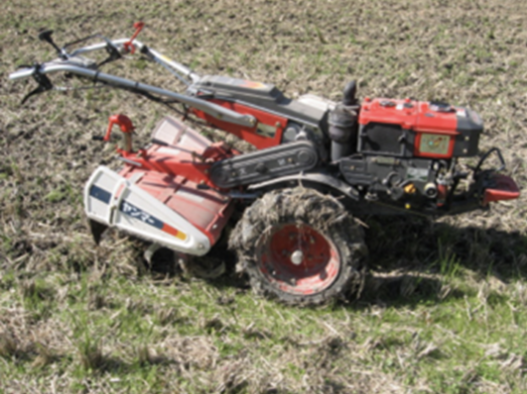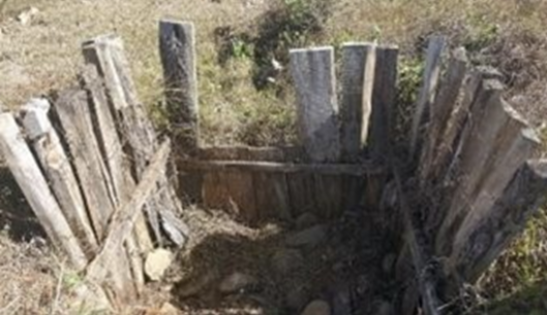Planting
Beds for planting or individual planting sites are laid out after the site is mostly prepared. The soil in these beds or individual holes (±mounding) generally receives additional cultivation to support the establishment of the plants. Soil amendments and compost are added at this stage. The key documents for this module provide guidance on the various options for boosting soil fertility at this stage, for example, the ‘Farm and Forestry Production and Marketing Profile for Breadfruit’ recommends adding a small amount of slow-release balanced N-P-K fertilizer to the bottom of the planting hole and then covering with soil before planting.
Mulch can be added at this stage or after planting. Mulching is an excellent practice for reducing soil erosion due to rainfall, holding in moisture, keeping the soil cool and reducing weed recruitment. Mulch is most effective if it lies directly in contact with the soil surface, so chopped or chipped organic material is preferable. Uncomposted organic materials should not be mixed into the soil immediately before planting, as the resulting organic activity in the soil [and binding on nitrogen (N)] will suppress plant growth. Planting a groundcover crop removes the need to add mulch. Figure 1 shows the planting of mucuna bean as a ground cover crop with taro. Mucuna improves soil fertility, improves taro yield, reduces weed numbers and improves soil biology.

Figure 1: Mucuna bean that has dried off provides excellent dried mulch ground cover as illustrated here with taro
Where there is large woody matter on the site, this can be dried and biocharred in situ at the sites where the breadfruit plants are to be planted (the biochar is made underground in much the same way as a lovo or umu). This practice gives excellent results in higher-rainfall areas with sticky red clay soils – some of the clay is converted into brick-like pieces which together with the charcoal/biochar greatly improves drainage and growth of young breadfruit trees.
If you are cultivating breadfruit on sloping land, then measures need to be taken to avoid soil erosion. These measures include: (a) planting vetiver grass along the contours using an A-frame to identify the location of the contours; and (b) if the slope is significant, using drop structures to improve drainage and minimise soil loss (Figs. 2a-c). A two-wheeled tractor can be used to improve labour efficiency when establishing your agroforestry orchard (Fig. 3).

Figure 2a: Using an A-frame to determine contours for orchard establishment (Vanuatu)
|
 Figure 2b: Vetiver grass planted along contours  Figure 3: Two-wheeled tractor for improving overall efficiency |
When is the best time to plant?
Breadfruit planting stock must be healthy when planted. If you have produced them in a nursery then they must be well ‘hardened off’ by exposing them to full sun for 2-4 weeks before field planting. Planting materials for all crops need to be ready for planting at about the same time so that the planting area is quickly filled with no gaps for any weeds to establish and take over (which will increase maintenance). Best planting practices need to be observed and these practices are described in the key documents.
Planting early in the wet season and once the soil is saturated can eliminate the need for watering at planting time. If you farm in an area prone to periodic drought then irrigation can be a wise investment. If crops are planted in an area with suitably high rainfall (greater than 2000mm pa) with only short periods of water stress, hand watering or irrigation is less important as the trees become established. However, longer duration irrigation may be required if you are growing your breadfruit with vegetables or fruit tree crops such as papaya.

